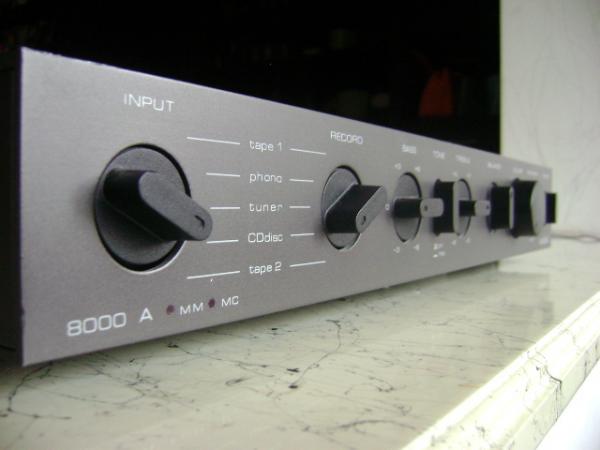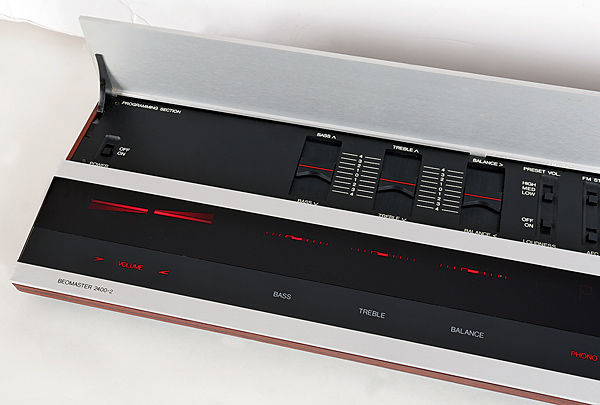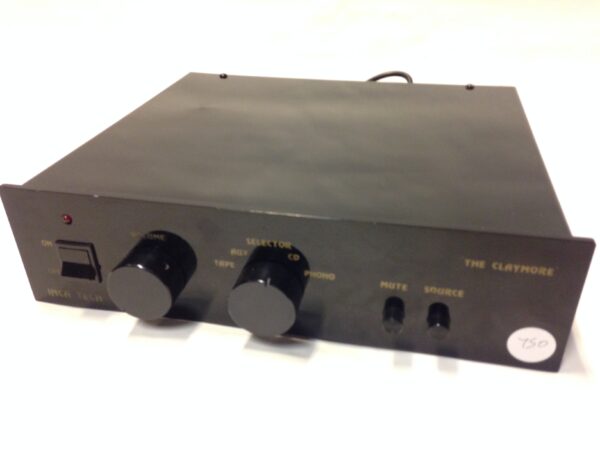It’s been a long time since Naim Audio Ltd. initially opened its doors in a Wiltshire backstreet in 1973, and since then, the company has grown in popularity and reputation. Julian Vereker, the firm’s founder, once stated that he started the company to manufacture hi-fi equipment that he and his friends would enjoy listening to. He wasn’t like many of his audio industry peers in that he didn’t have a Cambridge University engineering PhD and twenty years of electronics design experience. Vereker was completely self-taught, claiming that it took him a year to learn enough about the subject to build his own amplifier.
While many saw this as a flaw in his character, it was actually a strength in several ways. In solid-state design, there was a strong orthodoxy, with amplifiers being considered as “a piece of wire with gain,” as the saying went. The idea was that if they were all designed properly, they would all sound the same. Julian blew a hole in it by being able to demonstrate and explain for significant discrepancies. The NAP 200 power amplifier was the first Naim product, and it was quickly followed by the NAC 12 preamplifier. They were both created for his own use only before being mass-produced, and this set the tone for Naim amplifiers for the next two decades or more. Those early Naims were exceedingly distinctive in sound, and as a result, immensely divisive; indeed, the firm was known for many years as a “Marmite” brand due to the polarizing nature of its products…
Julian Vereker was a maverick and a firebrand. In this, he had a lot of interests with Ivor Tiefenbrun of Linn Products, and the two British hi-fi firm CEOs were fast friends; they were fast-living, loud-talking, creative types who had a reputation for being playboys in the early days. They were undoubtedly talented, but they also put in a lot of effort. Julian’s gift of gab made him an expert at expressing what made his products unique to both potential consumers and subsequently hi-fi journalists. This wasn’t just hyperbole; Naim amplifiers were unique, to say the least — for better and for worse.
The NAC 12/NAP 200 sold in tiny quantities, and Vereker didn’t truly find his stride until 1975. The product in question was the NAP 250, which became a legendary amplifier in just a few years and served as Naim’s top stereo power amp for a quarter-century. Most British hi-fi journals adored it and began recommending it again and over again, nearly to the exclusion of anything else. In the late 1970s, some outstanding Class A, V-FET, and later MOSFET solid-state designs were on the scene, but these were sometimes hard to notice due to the Naim’s massive column inches in many magazines of the time. Julian described the sound as “a musical signal that I could equate to the sound of live music,” and he nailed the nail on the head with that description. Julian, on the other hand, was a big rock lover who didn’t spend much time listening to anything else.
His argument was that a power amplifier should be able to drive loudspeakers into ‘real world’ loads, such as dynamically changing impedances rather than the static impedances seen on the test bench. The way the hi-fi press gushed about the NAP 250, you’d think it pumped out a kilowatt or more, yet it only put out 125 watts into 4 ohms and roughly 70 watts into an 8 ohm load. Indeed, Naim names its power amplifiers after the overall power delivered to a 4 ohm load; with its stereo amplifiers, you must divide by two to get the ‘per channel’ rating. Despite being relatively modest in the power stakes compared to the emerging American and Japanese rivals, the corporation was right not to worry over measured power figures. Indeed, it possessed more life and personality than many significantly larger (on paper) amplifiers, which aligned with Julian’s stated goals for the NAP 250’s design.
It was, in fact, an experiment in designing amplifiers in a new way. It used special output transistors that were biased into Class B mode, which Vereker claimed was more efficient and capable of delivering more power. He was also unconcerned about traditional harmonic distortion tests or power output into a static load. However, he was fascinated by power supply and went to great lengths to over-engineer them, with each NAP 250 powered by a massive 450VA toroidal power transformer specifically built to Naim’s specifications by Holden & Fisher. Two windings and twin 22,000uf capacitors fed two regulator boards, providing considerable dynamic headroom so the amplifier could get loud quickly — when the music signal needed it. He also insisted on DIN connectors; this wasn’t a significant concern in the early 1970s, when the connector was commonplace, but by the 1990s, the rest of the world had switched to RCA phono connections. Naim also employed recessed ‘banana’ loudspeaker sockets from the start, ruling out spade connectors and bare wire.
By 1978, the NAP 250 was generating quite a stir, and it had become a ‘favorite rave’ (as they used to say back then) of many a reviewer. Furthermore, Vereker’s acquaintance with Tiefenbrun led to a strategic partnership with Linn, with the Glasgow firm supplying the source and loudspeakers while the Salisbury firm handled the electronics. The active version of the Linn Isobarik speaker (the PMS) prompted Naim to build an active crossover, the NAXO, to power a pair of active Isobariks using no fewer than three NAP 250s. For a decade, starting in the late 1970s, it was a potent combination that served as a “force multiplier” for both Linn Products and Naim Audio. However, about 1988, when Naim began producing loudspeakers and Linn began producing electronics, the cooperation began to sour.
The NAP 250 received a near relative in the form of the NAP 135 mono power amplifier in 1984. This was allegedly a NAP 250 with its two stereo channels separated into separate boxes and, of course, power supply. The Linn/Naim ‘Six Pack’ was made up of six NAP 135s, driving NAXOs into Linn Isobariks, with each channel’s bass, mid, and treble getting its own NAP 135. The power output remained the same at just over 70W RMS, but the circuit arrangement was significantly altered, allowing Naim to focus on grounding with a star ground bus bar between the large smoothing capacitors. A cooling fan was also included, which came in handy when the 135 was asked to drive unusual loads, which it accomplished better than most other transistor amplifiers of the time. Linn’s Isobarik loudspeaker was infamous for being one of the few loads that could trip this fan in regular operation.
Both the NAP 135 and 250 have heavy aluminium extruded enclosures that served as heatsinks at first. This style, which was painted black with a silver front edge and ended in 1989, became known as the ‘chrome bumper’ era. The entire Naim line received an olive green front panel with an illuminated Naim logo this year. Many Naim owners were thrown off by the shift, and some even sold their complete systems in order to have a perfect aesthetic match with their new Naim kit. It felt like a decent idea at the time because the early style was starting to look too ‘1970s,’ but many people now prefer the original old school Naim look. The NAP 250’s circuitry was adjusted in 2002, while the NAP 135 was discontinued at the same time. The NAP 250 was redesigned again in 2013, this time with an aluminium chassis and sleeves, as well as a diecast zinc fascia; it’s a different beast from the original, but it still has a lot of DNA in common with its 1975 predecessor.
Many people believe this amplifier’s sense of speed, rhythm, and time is unrivalled. Some claim that, despite the fact that Naim now offers better all-around power amplifiers, the NAP 250 still has that particular something. It has a sense of life and vibrancy that you don’t hear very frequently; competing power amps from other manufacturers sound flat and lack energy and/or joie de vivre all too often. Even though they’re more powerful and have more oomph, there’s something about the way the ‘250 goes about its business that’s truly unique. However, it is not for everyone; many listeners will find it unpleasant or even oppressive; it’s probably not the type of amplifier you’d want to unwind in front of at the end of a long day, listening to jazz classics at moderate volumes just before bed! This echoes Julian Vereker’s assertion that an amplifier must provide a strong feeling of live music.
The NAP 135 is a slightly punchier, but slightly quieter half-brother; it’s a little more couth and smooth, but it performs everything the NAP 250 does, including the magic stuff! It sounds frantic, tense, and emotionally invested. It had a vice-like grasp on the bass, a lively and expressive midband, and a clear and cutting treble. The NAP135 provides much more musical flexibility, as well as easier and more expressive dynamics. It’s fantastic in an active system as part of a ‘six pack’ – but then, given the price, it should be! The NAP135 sings like few others at any price and simply sounds great when paired with a vintage Naim NAC32.5 preamplifier and a good power supply. Okay, it’s ‘appropriate’ if you want loud live rock music, but it can be a little stark and dark for a classic program, and jazz is enjoyable but lacks tonal color.
The Naim NAP 250 and 135 are polarizing products; some people adore them, while others can’t stand them. However, when Naim’s first statement power amplifier was released, the world shifted a little. In many ways, later goods have improved them, yet these two remain unique to this day. It deserves a particular place in the grand scheme of hi-fi for this reason alone. With its numerous versions throughout the years, the NAP 250 may be considered a serial thriller!
The beautiful thing about purchasing any used Naim hi-fi equipment is that the Salisbury firm takes pride in its legacy items. Many others don’t, and just stop supporting them, answering the phone with an apologetic “no, sorry” when you inquire about servicing or replacement parts availability. So you may buy a secondhand NAP 250 with confidence, knowing that you can send it back to Naim for repair or servicing if necessary. Recalibration, solder joints or internal connectors need cleaning, and capacitors need changing as electronics age, therefore it’s excellent to have the manufacturer still around to perform it!
The pricing of used Naim hi-fi stand up very well because to Naim’s excellent – and unexpectedly reasonable – aftercare service. It does, after all, have some of the greatest residuals in the industry. A Naim product’s used price could be thirty to fifty percent higher than its price competition at the time. This implies that a nice NAP 250 won’t be cheap; expect to pay around £1,000 for one. On the other hand, when you do, it will very certainly have been serviced and will be working just as well as it did when it originally left the factory. And at £1,000, it still offers a lot of value for the money.







